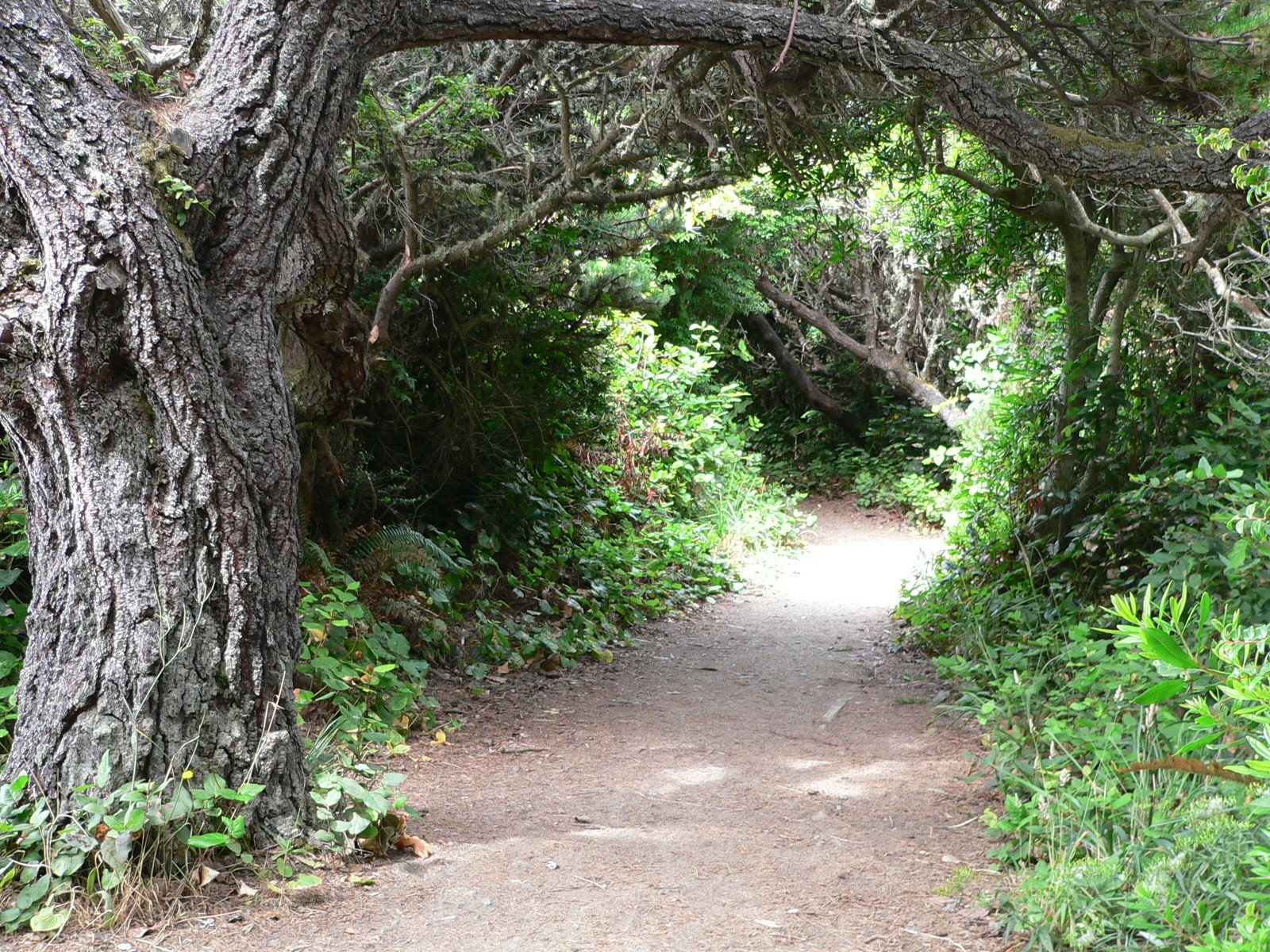
Camping at Patrick’s Point State Park, by Benjamin Fordham
Patrick’s Point State Park near Trinidad is like a land frozen in time. Giant ferns and thick underbrush hem in large natural prairies and centuries old Sitka spruce are buffeted by the Pacific winds. One would almost expect to see a velociraptor trotting down one of the well manicured paths. But you won’t, it’s completely safe, even for children and the elderly. Located approximately 30 miles north of Eureka, Patrick’s Point State Park sits on a headland that juts dramatically into the Pacific Ocean. Last year over 16,000 people stopped by the park’s visitor’s center, and according to Steve Simmons, South District Manager for the Redwood Parks Association, that number is already over 17,000 for this year. According to Simmons, people travel from all over the world to visit the 640-acre park with some families coming generation after generation. “People love this park,” says Simmons. “It is unique. The coastal views here are hard to beat, the tide pools are amazing, and there’s excellent whale-watching.”
The park is home to abundant plant and animal life. Deer, bobcats, gray foxes and bears can all be found in the park’s forests and prairies (there are bear-proof containers for your food). Native birds include spotted owls, kingfishers, osprey, woodpeckers and the Steller’s Jay. Head down the trail to Agate Beach and you can find sea-lions, sea stars, shore crabs, chitons and sea anemones among other things. True to its name, Agate Beach is a popular site to hunt for the shiny stones. The area is also a premiere whale-watching location, with Gray whales regularly passing close to shore on their annual migration from Alaska to Mexico. Although the park sits in the heart of redwood country, the majority of tree species are Sitka spruce, red alder, Doug fir, hemlock and pine. In the springtime the prairies are home to a colorful display of native wildflowers and the park also has over 500 species of mushroom. “You’ve got spruce forests, the ocean, tidal pools…it’s pretty diverse,” says Simmons.
The park is also home to Sumeg Village, a recreated Yurok village that features a number of redwood plank houses, a sweat house, dance house and some dugout canoes cut from naturally fallen redwoods. The prairie it sits in was a traditional summer food-gathering area for the Yuroks. At the time European fur traders arrived in the area in the early 1800’s, Yurok tribal lands extended from the mouth of the Klamath River up to Wilson Creek near Crescent City to the north and south to the Little River near Trinidad. Built by Yurok tribal members, the village is presently used for spiritual and educational activities by the Yurok, Karuk and Hoopa tribes.
There is also a native plant garden located nearby with examples of plants used for food, medicine, basket-making and for ceremonial purposes by the Yurok. Wedding Rock, a popular place for couples to get married overlooking the Pacific Ocean, also sits within the park. Overall the park is a fantastic mix of unspoiled nature and well-maintained trails, campsites and facilities. With well over 100 individual campsites to choose from, as well as three family campgrounds, two group camps and three group picnic areas, the park is huge. It’s usually pretty booked-up through summer and early fall but this time of year there are sites available, so take advantage. The area is truly a natural wonder, so emblematic of Humboldt County and the greater Pacific Northwest as a whole. And you can enjoy it completely (probably) free of velociraptors.
For more information on prices and availability, call the park at (707) 677-3570.
For information on the State Park system call (800) 777-0369
or write to California State Parks at:
P.O. Box 942896
Sacramento, CA 94296-0001.
Arrangements for special events should be made at least one month in advance



Leave a Reply